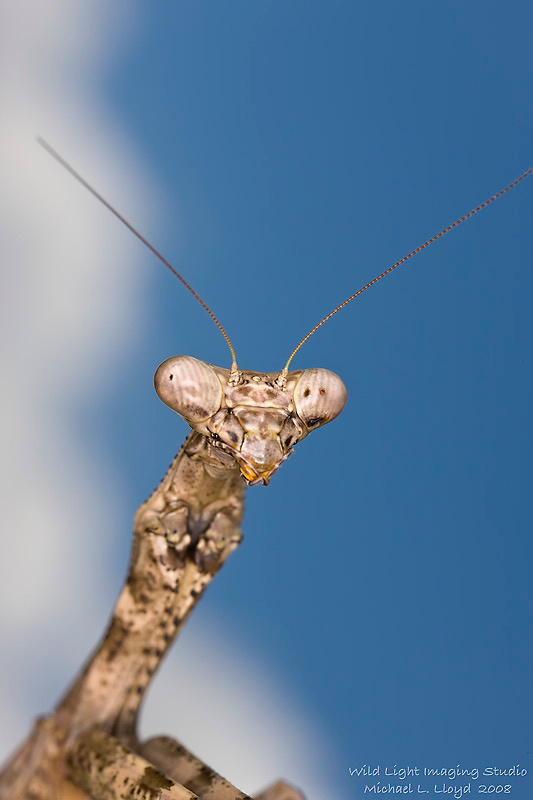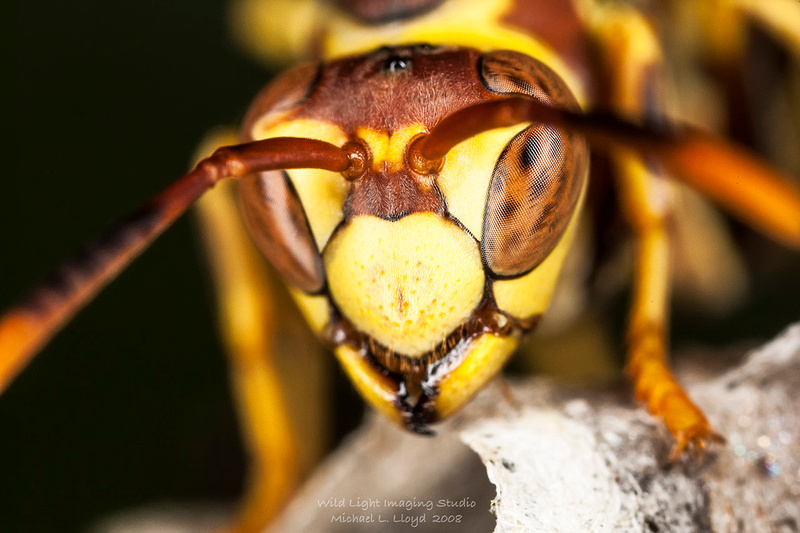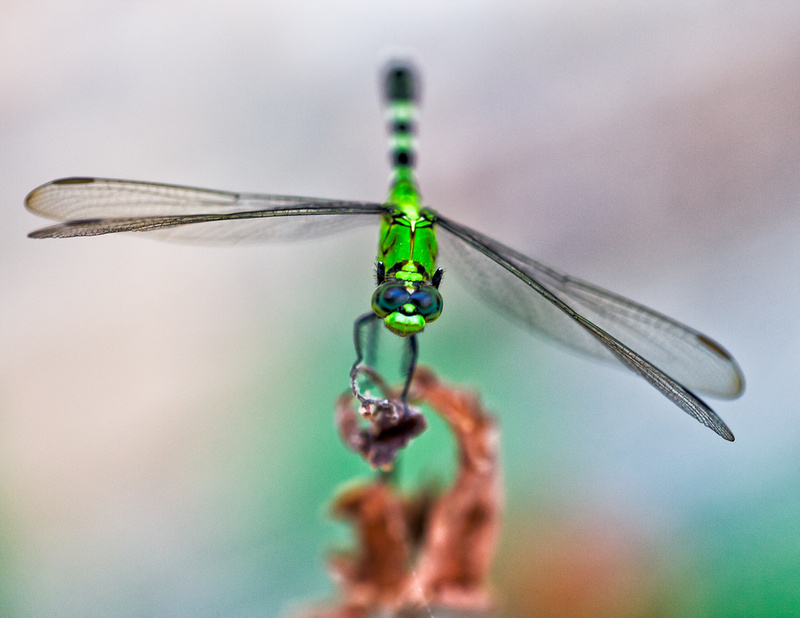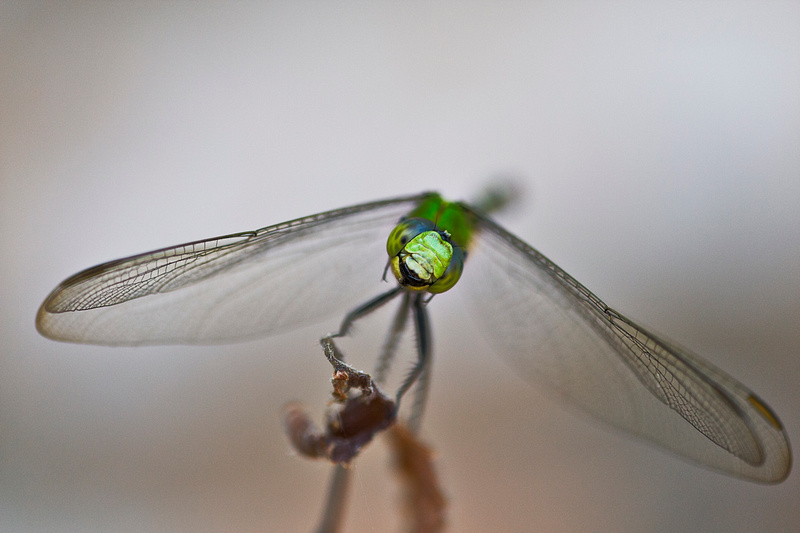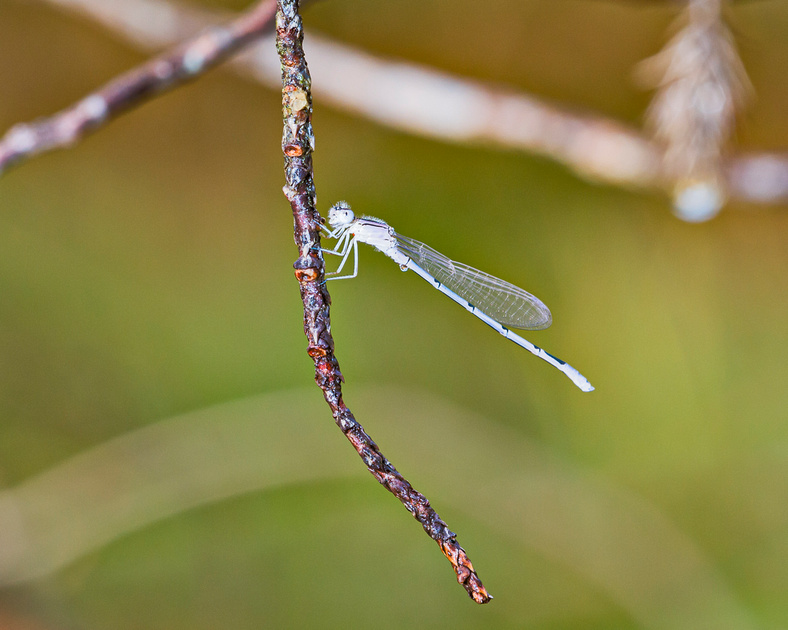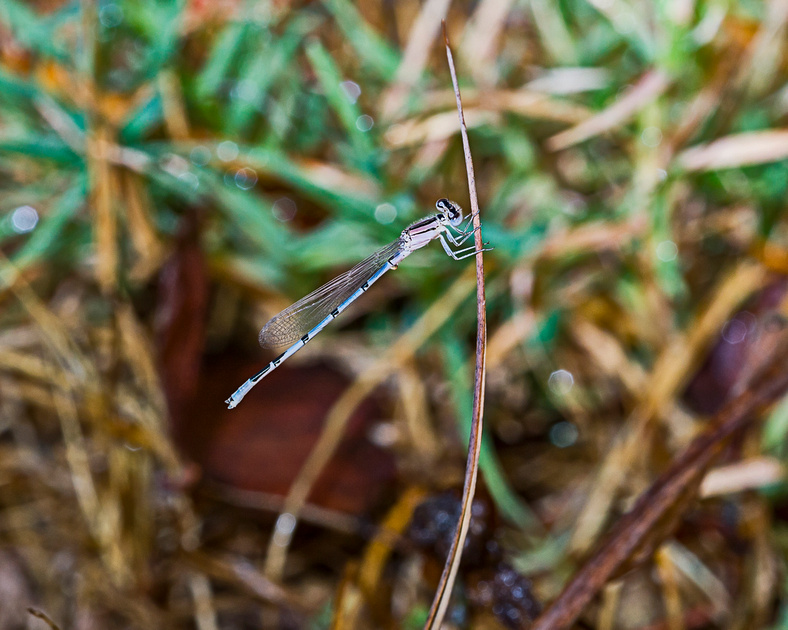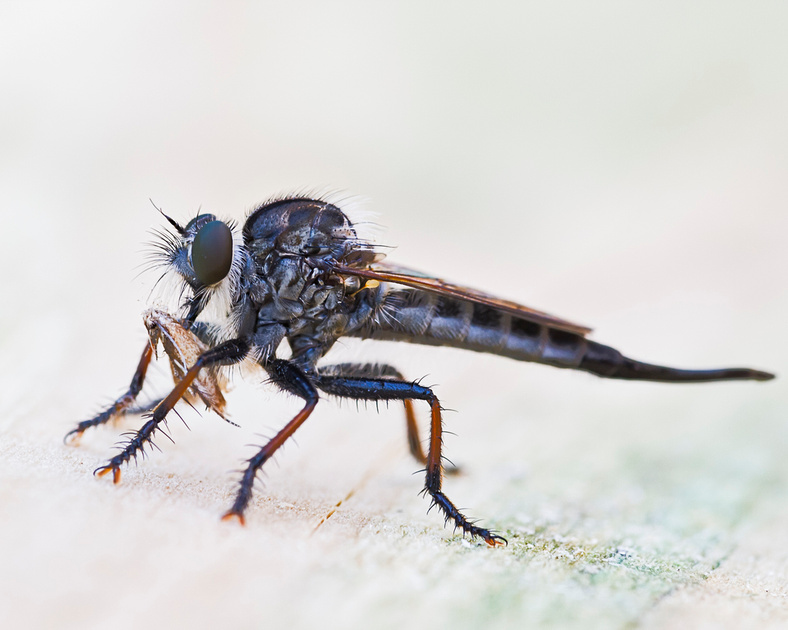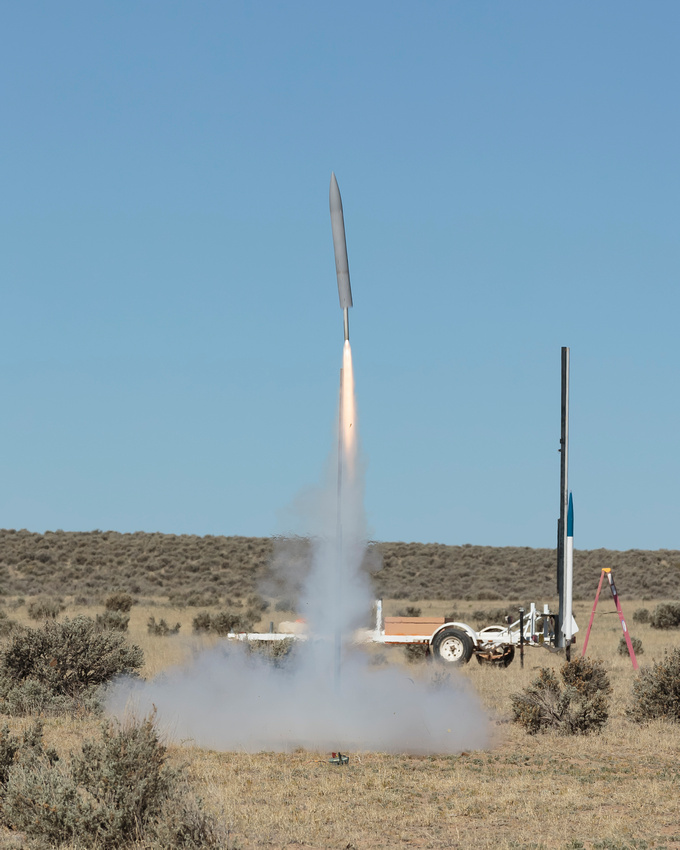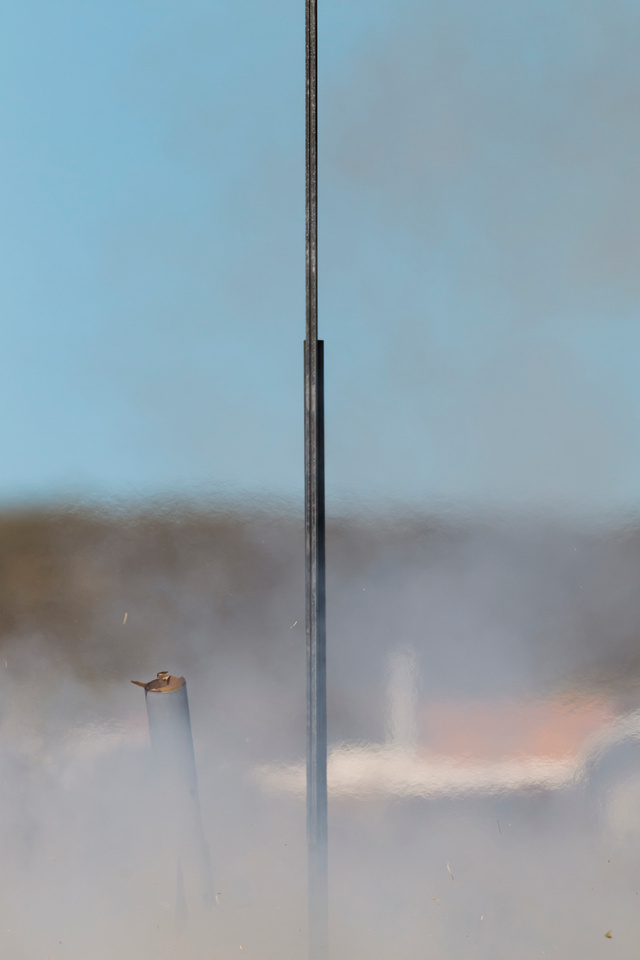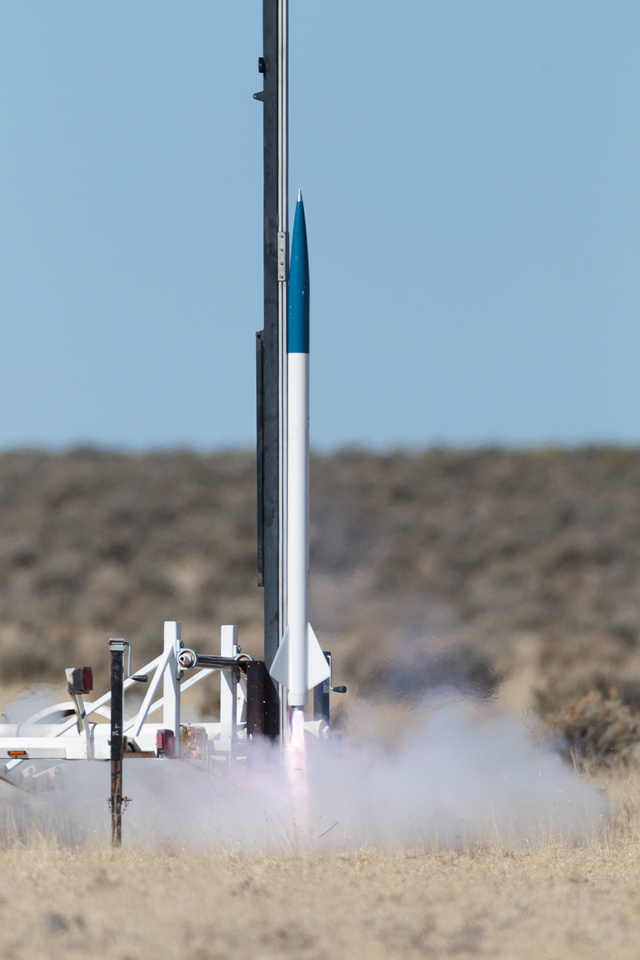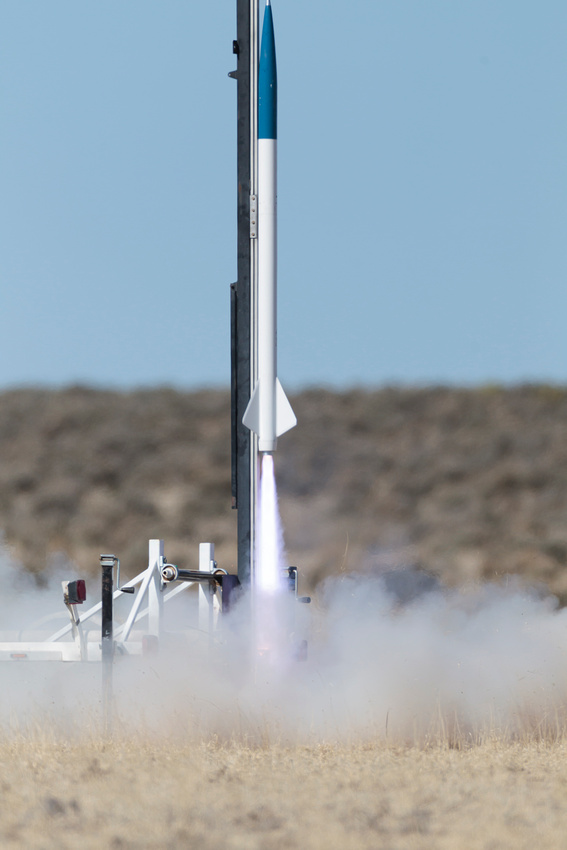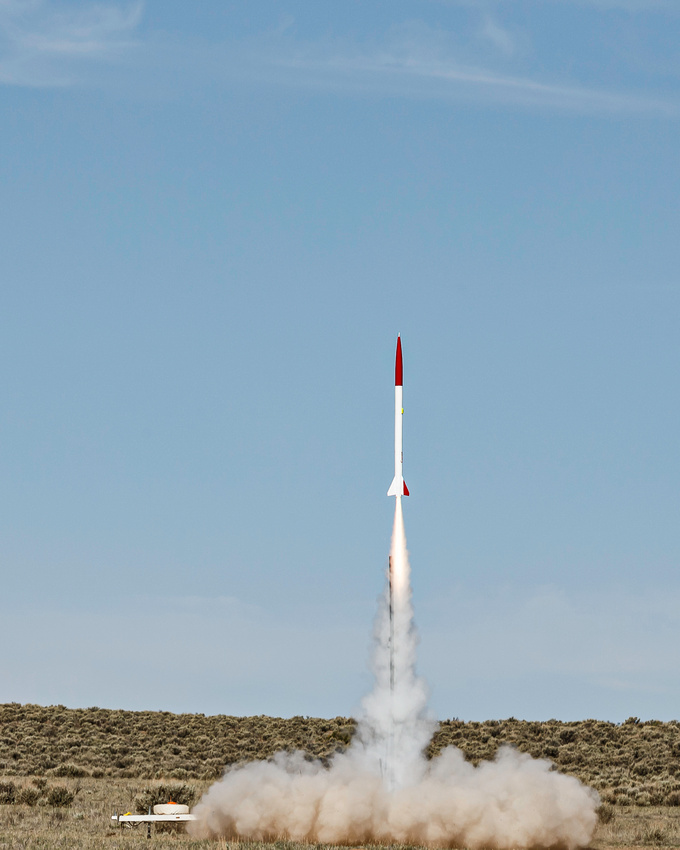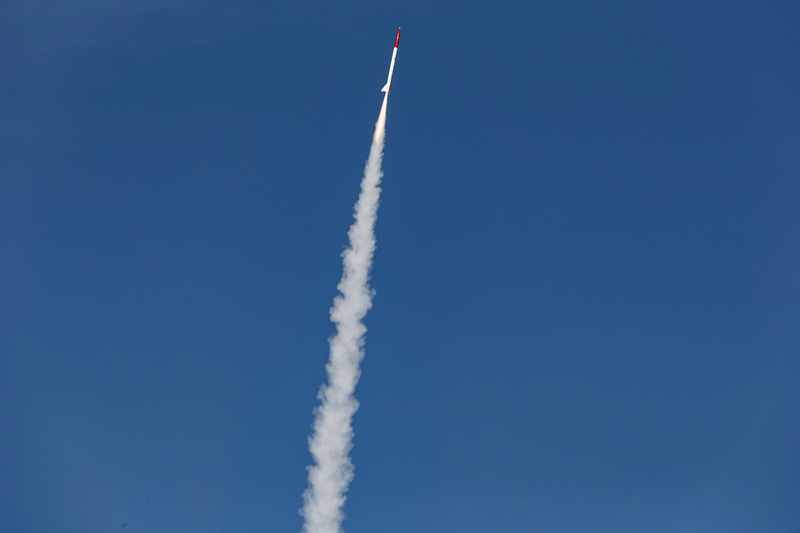Thanks, that makes sense. I'll have to give that a try at our March launch.
I forgot one other option. Most cameras have the ability to use exposure compensation. With that you can use whatever settings you prefer and just set the exposure compensation to x stops under, so no matter what the scene does it's always at x stop over or under depending on the setting.
If I'm not shooting manual, I use aperture priority but that's not necessarily always correct. Looking back at some past rocket launches, sometimes I shot Av mode, sometimes I shot manual. I didn't use exposure compensation for any of them. I wish I would have. I always shoot raw format so a 1 stop under exposure is pretty easy to recover. You can't get blown highlights or shadows back. With digital, it's just data. If you don't collect the data, it's not there to recover.
For example:
This is the last "flight" of my LOC IV. What you see is not cutting edge finless can technology or a prototype motor installation coming out of the bottom. The lip of the motor sheared off and drove the case through and out of the fin can. Metadata - 1/1250 @ f10. ISO 400 for a fast shutter. Fast shutter gets the action and f10 gets the depth of field. Aperture priority ie the camera sets the f stop, I picked the shutter speed. 0 EV.
I had two cameras going. This was shot handheld with the 70-200 @200mm. The 600 f4 was on a tripod and caught the gory details of the fin can not traveling with the rest of the rocket. One hand on the button of the camera that the 600 was attached to and one hand holding the camera with the 70-200. When the countdown gets to zero I hold the button down on the 600 camera and let the high speed shutter collect frames fro me.
Fin can's maiden flight without at motor. Manual, ISO 250 1/4000 @ f4. This reminds me of a scene from the 13th Warrior. It was after their first fight with the Wendol. "Come friend,
your head has gone looking for your hands. They will meet each other in Paradise."
For our L3 guys launch, I used the same two camera setup but the settings were different. His rocket leaves the pad a bit faster than mine so the camera with the 600 was set to manual, 1/4000 @ f4, ISO 250. This is the 8th frame of the sequence which runs from no ignition to this point. I left out the camera model. It's an old 1D MKIV that has a relatively slow frame rate of 10 frames per second. Still a workhorse though. The newer, but not new, 1DX MKII is 14fps but it has a faster, larger buffer and it doesn't fill up as fast (which makes the camera stop). It'll shoot 4k video @60fps and full HD 1080P @120fps. I was just about to start shooting launches with one video camera and one photo camera when work transferred me back home to TX.
The next frame. The frame after this one is just the fin can (his was still attached) just before it clears the launch rail.
I didn't get any good images of the rest of the flight. It happens,
When I first started, I just used the 70-200. I don't think these are terrible.
L3 Launch (not mine)
Flight





